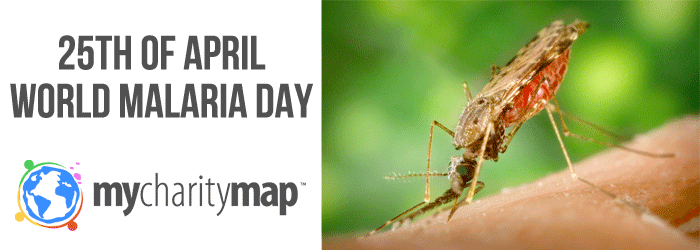
The World Malaria Day, that is the 25th April, was instituted by World Health Organization (WHO) Member States during the World Health Assembly in 2007. World Malaria Day is an occasion held to highlight the need for continued investment and sustained political commitment for prevention and control of malaria. Moreover, it is an opportunity for the affected countries to share experiences and join hands for new donors to join in a global partnership against malaria; for research and academic institutions to flag scientific advances to both experts and the general public; and for international partners, companies and foundations to showcase their efforts and reflect on how to further scale up interventions. More information can be found at http://www.who.int/campaigns/malaria-day/2013/en/.
Malaria is caused by plasmodium parasite. The plasmodium parasite can be spread to the humans through the bite of infected mosquitos. The plasmodium parasite is spread by female Anopheles mosquitos. They are also known as ‘night-biting’ mosquitos because they bite commonly between dusk and dawn. If a mosquito bites an infected person, it can become infected and spread the parasite on to other people. However it must be noted that malaria cannot be spread directly from one person to another. 219 million cases of malaria are estimated to occur around the world annually; 660 000 deaths occur annually, mostly in children under five years of age. 68% of malaria deaths globally occur in the 10 highest-burden countries.
Symptoms of malaria. Malaria is an acute feverish illness. In a non-immune individual, symptoms appear within 10–15 days after a bite by the infective mosquito. The first symptoms (fever, headache, chills and vomiting) may be mild and difficult to recognize as malaria. If it remains untreated 24 hours, Plamodium falciparum malaria can progress to severe illness usually leading to death. Children suffering from severe malaria usually the following symptoms: severe anemia, respiratory distress due to metabolic acidosis, or cerebral malaria.
Malaria is mosquito-borne disease that is preventable and treatable. According to the latest estimates released on December 2014, there were about 198 million cases of malaria in 2013 (with an uncertainty range of 124 million to 283 million) and an estimated 584 000 deaths (with an uncertainty range of 367 000 to 755 000). Malaria mortality rates have fallen by 47% globally since 2000, and by 54% in the WHO African Region.
Most deaths do occur among the children who are living in Africa where a child dies every minute from malaria! However, malaria mortality rates among the children in the continent Africa have been reduced by an estimated 58% since 2000.
The funding situation of malaria. The International disbursements for malaria control rose sharply during the past 8 years and were estimated to be $ 1.66 billion in 2011 and $ 1.84 billion in 2012. National government funding for malaria programs has also been increasing in recent years and is standing at an estimated $ 625 million in 2011. Even so, the funding for malaria prevention and control that is currently available is far below the resources required to attain global malaria targets. It is estimated $ 5.1 billion is needed every year between 2011 and 2020 in order to achieve the universal access to malaria interventions. In 2011 only $ 2.3 billion was available: less than half of what is required.
This means that more partners are needed to raise more money if at all the universal access to malaria intervention is to be achieved. At mytravelsmap.com members can raise money for their global malaria target, share their travel adventures enjoy the best accommodation deals available.